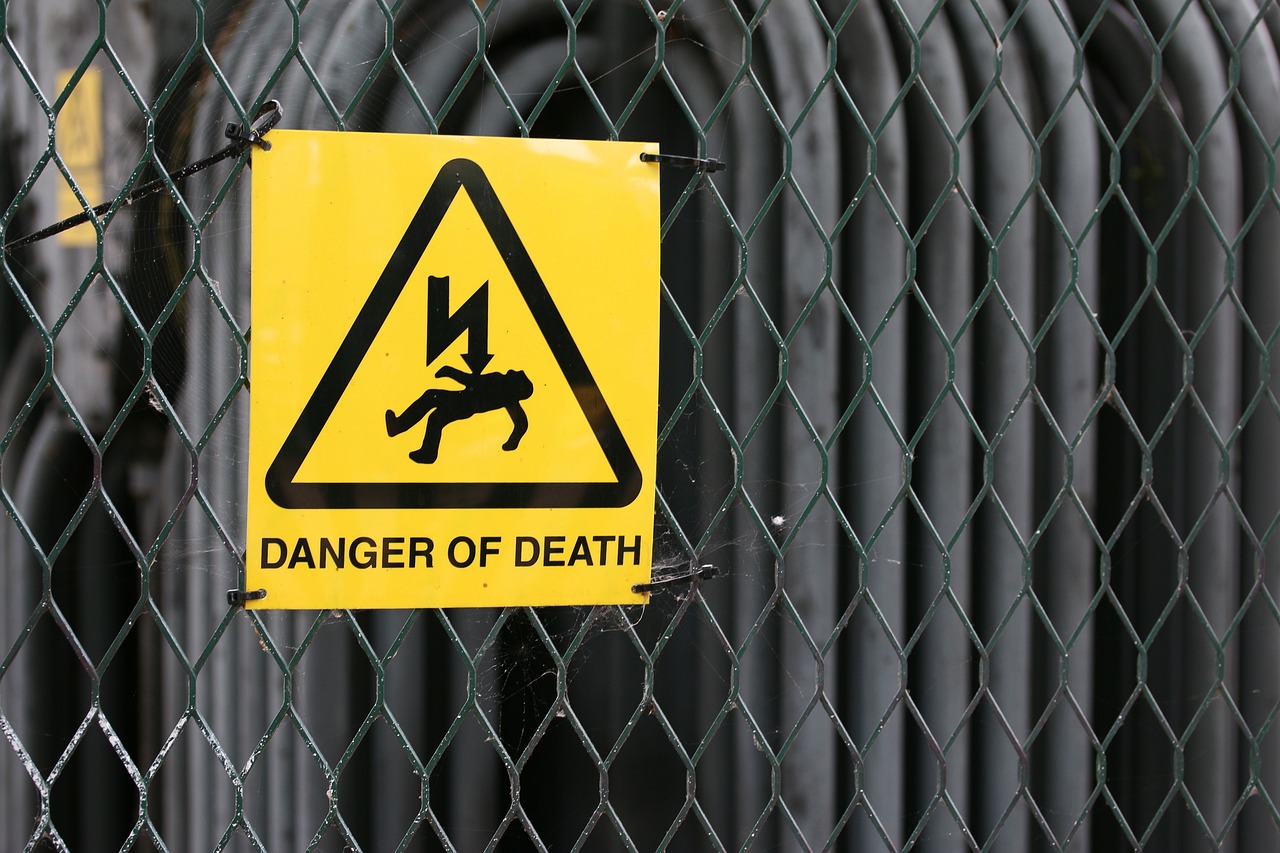Understanding the Dynamics of Human Behavior For Safety
The intricate relationship between human behavior and safety is a fascinating topic that deserves our attention. Every day, we make decisions that can either enhance our safety or put us at risk. But what drives these decisions? Understanding the dynamics at play can not only help us improve safety protocols but also reshape how we think about risk management in various environments. Imagine walking into a construction site; the perception of danger can either elevate your caution or lull you into a false sense of security. This dynamic interplay between perception, cognition, and emotion is what we need to unravel to foster a safer world.
At its core, safety isn’t just about rules and regulations; it’s about the people who follow them. Our behavior is influenced by numerous factors, including our past experiences, emotional state, and even the social environment we find ourselves in. For instance, have you ever noticed how a group of friends might downplay the risks of a reckless activity? This social influence can lead to decisions that compromise safety. By examining these factors, we can better understand how to create environments that promote safer behaviors.
Furthermore, it’s essential to recognize that safety is not a one-size-fits-all approach. Each environment—be it a workplace, a home, or a public space—carries its unique set of risks and challenges. Tailoring safety measures to address these specific contexts can significantly enhance their effectiveness. For example, a factory might require different safety protocols compared to an office setting. By delving into the nuances of human behavior, we can devise strategies that resonate with individuals and encourage them to prioritize safety in their daily lives.
In conclusion, understanding the dynamics of human behavior is crucial for fostering a culture of safety. By recognizing how perception, cognitive biases, emotions, and social influences shape our decisions, we can develop more effective safety interventions. Whether through training programs, behavioral interventions, or simply fostering open conversations about safety, we have the power to create environments that not only safeguard lives but also promote a proactive approach to risk management.
- What is the role of perception in safety?
Perception significantly influences how individuals assess risks and make safety-related decisions, impacting overall safety protocols.
- How do cognitive biases affect risk assessment?
Cognitive biases can distort our judgment, leading to inaccurate risk evaluations, which is why awareness of these biases is critical.
- Why are emotions important in decision-making?
Emotions can heavily influence our choices, sometimes leading to fear-driven or overconfident decisions that impact safety.
- What are behavioral interventions for safety?
These are strategies aimed at changing unsafe behaviors through education and reinforcement, ultimately improving safety outcomes.

The Role of Perception in Safety
Perception plays a crucial role in how we interpret our surroundings and make decisions, especially when it comes to safety. It's fascinating to think about how our individual backgrounds, experiences, and even our current emotional state can shape our perception of risk. For instance, someone who has experienced a workplace accident may view certain tasks as significantly more hazardous than someone who hasn't. This difference in perception can lead to vastly different safety behaviors and attitudes. Understanding this dynamic is vital for developing effective safety protocols.
Moreover, our perception is not just a passive process; it actively influences our behavior. When individuals perceive a situation as dangerous, they are more likely to take precautions. Conversely, if they perceive a situation as safe, they might neglect necessary safety measures. This can be particularly problematic in environments where risks are not immediately visible. For example, in construction sites, workers might underestimate the dangers associated with heights or machinery if they feel confident in their skills, leading to potentially disastrous outcomes.
To illustrate this point further, consider the following factors that can influence perception in safety contexts:
- Experience: Previous encounters with similar situations can alter how risks are perceived.
- Training: Proper training can enhance awareness and improve risk assessment abilities.
- Environmental Cues: Visual indicators, such as warning signs or safety gear, can shape our perception of safety.
It's not just about individual perception, though; social dynamics also play a significant role. Group norms can either promote safe behaviors or lead to complacency. If a team collectively perceives a task as low-risk, even if it is not, individuals may feel pressured to conform to that belief, potentially putting themselves in harm's way. This phenomenon highlights the importance of fostering a culture of safety where open communication and shared understanding of risks are prioritized.
Ultimately, improving perception around safety requires a multi-faceted approach. Organizations must invest in training programs that not only educate employees about the risks but also encourage them to critically assess their perceptions. By enhancing awareness and understanding of how perception influences safety decisions, we can create a safer working environment for everyone.
- How can perception impact safety decisions? Perception influences how individuals assess risks and decide on safety measures. A heightened awareness of risks can lead to safer behaviors.
- What role does training play in shaping perception? Training can significantly enhance individuals' understanding of risks, helping them to perceive situations more accurately and make informed decisions.
- Can social influences affect personal perception of safety? Absolutely! Group norms and peer pressure can alter how individuals perceive risks, sometimes leading to unsafe behaviors.

Cognitive Bias and Risk Assessment
Cognitive biases are those pesky little mental shortcuts that our brains take, which can often lead us astray when it comes to assessing risks. Imagine you're driving down a winding road, and you see a sign warning of slippery conditions. Your brain might downplay that risk because it’s a sunny day, convincing you that you’re in control. This is a classic example of how cognitive biases can skew our perception of safety. Recognizing these biases is crucial for developing strategies that promote more accurate risk evaluations.
One of the most common cognitive biases affecting risk assessment is the availability heuristic. This is when individuals rely on immediate examples that come to mind when evaluating a specific topic, concept, method, or decision. For instance, if someone has recently heard about a workplace accident, they may overestimate the likelihood of such accidents occurring in their own environment. This can lead to unnecessary fear or, conversely, a false sense of security if they haven’t experienced an incident personally.
Another bias to consider is the optimism bias, where individuals believe they are less likely to experience negative events compared to others. This can be particularly dangerous in safety contexts, as it may lead individuals to engage in risky behaviors, thinking, “It won’t happen to me.” For example, a construction worker might skip wearing a hard hat because they feel confident that accidents are something that happens to others, not them. This mindset can create a culture of complacency, where safety protocols are not taken seriously.
To tackle these biases effectively, organizations can implement training sessions that focus on awareness and education. By highlighting these cognitive traps, employees can learn to recognize when their judgment might be clouded. For instance, a training program could include scenarios where participants discuss their reactions to various risk situations, helping them to identify their biases in real-time. This kind of engagement not only enhances understanding but also fosters a proactive approach to safety.
Moreover, utilizing data-driven decision-making can mitigate the impact of cognitive biases. By relying on statistics and empirical evidence rather than gut feelings or anecdotal experiences, individuals and organizations can make more informed choices regarding safety practices. For example, if a company examines accident reports and identifies a trend, they can implement targeted safety measures rather than relying solely on individual perceptions of risk.
In conclusion, understanding cognitive biases is essential for effective risk assessment in any environment. By recognizing these biases, organizations can create strategies that promote safer behaviors and enhance overall safety culture. Remember, it’s not just about following protocols; it’s about understanding the psychological factors that influence our decisions. After all, safety is not just a set of rules; it’s a mindset!
- What are cognitive biases?
Cognitive biases are systematic patterns of deviation from norm or rationality in judgment, which can affect decision-making processes. - How do cognitive biases impact safety?
They can lead to misjudgments about risk, resulting in unsafe behaviors or complacency regarding safety protocols. - What can organizations do to mitigate cognitive biases?
Implementing training programs focused on awareness and education, as well as utilizing data-driven decision-making, can help address these biases.

The Influence of Emotions on Decision-Making
When it comes to decision-making, emotions are like the unseen puppeteers pulling the strings of our choices. Imagine standing at a crossroads, where one path is lined with the bright lights of opportunity and the other is shrouded in shadows of uncertainty. Which way do you go? Your emotional state plays a pivotal role in that decision. It's fascinating how feelings can cloud our judgment or, conversely, illuminate the best path forward. For instance, when someone is feeling anxious or fearful, they may gravitate towards the safer option, even if it means sacrificing potential gains. On the flip side, a person filled with confidence might overlook critical risks, leading them down a perilous path.
To illustrate this, consider a scenario where a worker is faced with a safety decision in a high-risk environment. If they are feeling confident because of past successes, they might take shortcuts that jeopardize their safety. However, if they are fearful due to recent accidents, they may overreact and avoid necessary tasks altogether. This emotional tug-of-war can create a dangerous cycle, impacting not only individual safety but also the overall safety culture within an organization.
Moreover, emotions can be contagious. When one person expresses fear or anxiety, it can ripple through a team, affecting the decision-making processes of others. This is why fostering a positive emotional environment is crucial for safety. When team members feel supported and valued, they are more likely to engage in open discussions about safety concerns and collaborate to develop effective solutions.
In order to understand the intricate relationship between emotions and decision-making, it’s important to acknowledge the various factors at play:
- Emotional Awareness: Recognizing one's own emotions can lead to better decision-making. If individuals understand how their feelings influence their choices, they can take a step back and reassess their options.
- Emotional Regulation: The ability to manage one’s emotions can significantly improve decision-making. This involves strategies such as mindfulness and stress management techniques that help individuals maintain a clear head.
- Team Dynamics: Encouraging open communication about emotions within teams can foster a culture of safety. When team members feel safe to express their feelings, it can lead to more informed decisions.
In conclusion, emotions are not just fleeting feelings; they are powerful forces that shape our decisions, especially in safety-critical environments. By understanding and managing these emotions, organizations can create a safer and more effective workplace. This understanding is not just about avoiding risks; it’s about enhancing the overall decision-making process to ensure that safety remains a top priority.

Fear and Risk Aversion
Fear is a powerful emotion that can influence our decision-making processes significantly. When faced with a potential threat, whether it’s physical danger, financial loss, or emotional harm, our instinct is often to avoid that risk at all costs. This natural tendency towards risk aversion can be beneficial in some situations, as it helps keep us safe from harm. However, it can also lead to excessive caution, preventing us from taking necessary risks that could foster growth or improvement in safety practices.
For instance, consider a workplace environment where employees are too fearful to report unsafe conditions. This fear might stem from worries about job security or being perceived as a troublemaker. As a result, they may choose to ignore hazards, which can lead to greater risks for themselves and their colleagues. Understanding this relationship between fear and risk aversion is crucial for organizations aiming to cultivate a safety-first culture.
To illustrate the impact of fear on risk aversion, let’s look at a simple table that summarizes different scenarios where fear influences decision-making:
| Scenario | Fear Response | Outcome |
|---|---|---|
| Reporting a safety hazard | Fear of retaliation | Hazard remains unaddressed |
| Participating in safety training | Fear of inadequacy | Low attendance and engagement |
| Speaking up in a group setting | Fear of judgment | Missed opportunities for improvement |
When fear drives risk aversion, it can create a cycle of inaction that hinders safety initiatives. Organizations must recognize this dynamic and work to mitigate fear through open communication, supportive environments, and clear policies. By fostering a culture where employees feel safe to express their concerns and take calculated risks, organizations can enhance overall safety.
Moreover, addressing fear and its impact on risk aversion requires a multifaceted approach. Here are a few strategies that can help:
- Encourage open dialogue: Create platforms where employees can voice their fears and concerns without judgment.
- Provide training: Equip employees with the knowledge and skills to handle risky situations effectively.
- Celebrate successes: Acknowledge and reward safe behaviors to build confidence among employees.
In conclusion, while fear is a natural response to potential threats, it can lead to risk aversion that undermines safety efforts. By understanding and addressing the role of fear in decision-making, organizations can create a more proactive safety culture that encourages individuals to engage with risks in a constructive manner.

Confidence and Overestimation
Confidence can be a double-edged sword. On one hand, it can empower individuals to take action, make decisions, and tackle challenges with vigor. On the other hand, when confidence morphs into overestimation, it can lead to dangerous miscalculations that jeopardize safety. Think of it like driving a car; feeling confident behind the wheel is essential for maneuvering effectively, but if that confidence turns into a belief that one can speed through a red light without consequence, the results could be catastrophic.
Overestimation often stems from a lack of awareness regarding one’s limitations or the actual risks involved in a situation. This phenomenon is particularly prevalent in high-stakes environments, such as construction sites or healthcare settings, where the consequences of misjudgment can be severe. For instance, a construction worker might feel overly confident in their ability to balance on a narrow beam, disregarding safety protocols that are in place for a reason. This misplaced confidence can lead to accidents, injuries, or even fatalities.
To better understand the impact of overconfidence on safety, consider the following factors:
- Experience Level: Individuals with extensive experience may develop a false sense of security, believing they can handle any situation without proper precautions.
- Peer Influence: If colleagues exhibit overconfident behavior, it can create a culture where such attitudes are normalized, leading others to follow suit.
- Feedback Mechanisms: A lack of constructive feedback can perpetuate overconfidence, as individuals may not receive the necessary guidance to recognize their limits.
Addressing overestimation requires a multifaceted approach. Organizations can implement regular training sessions that emphasize the importance of realistic risk assessments. These sessions should encourage open discussions about past mistakes and lessons learned, fostering an environment where individuals feel safe acknowledging their limitations. Additionally, utilizing tools such as checklists can help ensure that safety protocols are followed, regardless of how confident someone may feel in their abilities.
In conclusion, while confidence is essential for effective decision-making, it is crucial to recognize when it turns into overestimation. By promoting a culture of safety that values humility, awareness, and continuous learning, organizations can mitigate the risks associated with overconfidence. Just like a seasoned pilot checks their instruments before takeoff, individuals in all sectors must remain vigilant and grounded in reality to ensure safety for themselves and others.
- What is overconfidence? Overconfidence refers to an individual's excessive belief in their abilities, often leading to misjudgments and risky behaviors.
- How can organizations address overconfidence? Organizations can implement training programs, promote open discussions about mistakes, and use checklists to ensure safety protocols are followed.
- Why is it important to recognize our limitations? Recognizing limitations helps individuals make more informed decisions, reducing the likelihood of accidents and enhancing overall safety.

Social Influences on Safety Behavior
When we think about safety, it’s easy to focus on individual actions and decisions. However, the truth is that our behaviors are often influenced by the social dynamics around us. Imagine walking into a room where everyone is wearing a hard hat; you’re likely to put one on too, even if you didn’t plan to. This is a clear example of how social influences can shape our safety behaviors. The presence of others can create a powerful atmosphere that either encourages or discourages safe practices.
Peer pressure is one of the most potent social forces at play. Whether we like it or not, we often adjust our behavior to align with those around us. This can be particularly significant in environments like workplaces, schools, or even during recreational activities. For instance, if your colleagues are skipping safety protocols, you might find yourself doing the same, not because you believe it’s safe, but because you want to fit in. This phenomenon, known as social conformity, can lead to dangerous situations where individuals compromise their safety for the sake of group acceptance.
Moreover, group norms play a crucial role in shaping safety behaviors. These unwritten rules dictate what is considered acceptable or unacceptable within a group. If a workplace culture prioritizes speed over safety, employees may feel pressured to cut corners. On the flip side, if a strong safety culture is established, where everyone values and practices safety, individuals are more likely to adhere to safety protocols. This highlights the importance of creating a positive safety culture that encourages collective responsibility for safety.
Another factor to consider is the role of leadership in influencing safety behaviors. Leaders set the tone for their teams. If they consistently model safe behavior and prioritize safety in their decision-making, their teams are likely to follow suit. Conversely, if leaders overlook safety violations or fail to address unsafe behaviors, it sends a message that safety is not a priority. This can create an environment where unsafe practices become normalized. Therefore, strong leadership is essential in fostering a culture where safety is valued and prioritized.
To sum it up, the social dynamics surrounding us—peer pressure, group norms, and leadership—significantly influence our safety behaviors. Understanding these influences can help organizations develop more effective safety training and policies. By fostering a culture that emphasizes safety and encourages positive peer influence, we can create environments where everyone feels empowered to prioritize their safety and the safety of those around them.
- What are social influences on safety behavior? Social influences on safety behavior are the effects that the presence of others, peer pressure, and group norms have on an individual's decision-making regarding safety practices.
- How can peer pressure affect safety? Peer pressure can lead individuals to conform to unsafe practices if those around them are not following safety protocols, potentially compromising their safety.
- What role does leadership play in safety behavior? Leadership is crucial in setting the tone for safety culture. Leaders who prioritize safety can positively influence their teams to adopt safe practices.
- How can organizations improve safety culture? Organizations can improve safety culture by promoting open communication, providing comprehensive training, and recognizing safe behaviors among employees.

Behavioral Interventions for Safety Improvement
When it comes to enhancing safety in any environment, behavioral interventions stand out as a powerful tool. These interventions focus on modifying individual behaviors to promote a safer culture. Think of it like teaching a child to look both ways before crossing the street; it’s about instilling habits that prioritize safety. By understanding the psychology behind human behavior, organizations can implement strategies that not only address unsafe practices but also encourage positive ones.
One effective way to implement these interventions is through education and training programs. These programs should be designed to be engaging and relevant to the specific environment in which they will be applied. For example, in a manufacturing setting, training might include hands-on demonstrations of safety equipment and procedures. This practical approach not only enhances learning but also ensures that employees can relate the information to their daily tasks. Additionally, incorporating real-life scenarios can make the training more relatable and impactful.
Another essential component of behavioral interventions is the use of positive reinforcement techniques. This method encourages individuals to adopt safe behaviors by rewarding compliance. Imagine a workplace where employees receive recognition or small incentives for consistently following safety protocols. This kind of positive feedback can significantly boost morale and motivate individuals to prioritize safety. Over time, this can lead to a cultural shift where safety becomes a shared value among all team members.
To illustrate the effectiveness of behavioral interventions, consider the following table that outlines some common strategies and their anticipated outcomes:
| Intervention Strategy | Description | Expected Outcome |
|---|---|---|
| Safety Training Workshops | Interactive sessions focusing on safety protocols and procedures. | Increased awareness and reduced incidents. |
| Incentive Programs | Rewards for individuals or teams demonstrating safe behavior. | Enhanced motivation and compliance with safety measures. |
| Behavioral Observations | Regular monitoring of safety practices with feedback provided. | Improved adherence to safety standards. |
Moreover, it’s crucial to foster a culture of open communication regarding safety. Encouraging employees to voice their concerns or suggest improvements can lead to a more proactive approach to safety. Organizations can establish feedback mechanisms where employees can anonymously report unsafe conditions or behaviors. This not only empowers individuals but also ensures that safety remains a top priority.
In conclusion, implementing behavioral interventions for safety improvement is not just about enforcing rules; it’s about changing mindsets and creating an environment where safety is valued. By investing in education, positive reinforcement, and open communication, organizations can significantly enhance their safety culture. It’s like planting a seed; with the right care and attention, it can grow into a robust tree of safety that benefits everyone.
- What are behavioral interventions? Behavioral interventions are strategies aimed at changing unsafe behaviors through education, reinforcement, and communication.
- How can positive reinforcement improve safety? Positive reinforcement encourages individuals to engage in safe practices by rewarding them for compliance, resulting in a more motivated workforce.
- Why is training important for safety? Training equips employees with the knowledge and skills necessary to recognize and mitigate risks, fostering a safer work environment.
- Can open communication impact safety? Yes, open communication allows employees to share concerns and suggestions, leading to proactive safety measures and improvements.

Positive Reinforcement Techniques
When it comes to enhancing safety in any environment, stand out as a powerful tool. Instead of focusing solely on punitive measures for unsafe behavior, organizations can foster a culture of safety by encouraging and rewarding compliant actions. Imagine a workplace where employees feel valued for adhering to safety protocols—this not only boosts morale but also promotes a proactive approach to safety. By recognizing and rewarding safe behaviors, we create an environment where safety becomes a shared responsibility.
One effective method of implementing positive reinforcement is through recognition programs. These programs can take various forms, such as monthly awards for employees who consistently follow safety guidelines or shout-outs during team meetings. This public acknowledgment not only motivates the individual but also sets a benchmark for others to aspire to. When employees see their peers being rewarded for safe practices, they are more likely to adopt similar behaviors themselves.
Another technique involves incentive-based rewards. Organizations can establish systems where employees earn points for safe behaviors, which can later be redeemed for prizes or benefits. For instance, a construction site might implement a points system where workers gain points for each week without accidents. These points can then be exchanged for gift cards, extra time off, or even a special outing. This approach not only makes safety engaging but also creates a friendly competition that encourages everyone to participate actively.
Furthermore, incorporating regular feedback is crucial in reinforcing safe behaviors. Providing constructive feedback after observing an employee's actions can lead to immediate improvements. For example, if a supervisor notices a worker using proper lifting techniques, a simple acknowledgment like, "Great job on lifting that box correctly! You're setting a fantastic example for the team," can reinforce the behavior. This feedback loop helps employees understand the direct impact of their actions on their safety and the safety of others.
To visualize the impact of these techniques, consider the following table that outlines the benefits of positive reinforcement in safety culture:
| Technique | Benefits |
|---|---|
| Recognition Programs | Boosts morale, encourages compliance, sets benchmarks |
| Incentive-Based Rewards | Engages employees, fosters competition, encourages participation |
| Regular Feedback | Promotes immediate improvements, enhances understanding of safe practices |
In conclusion, positive reinforcement techniques are not just about rewarding good behavior; they are about building a safety-first culture where everyone feels empowered to contribute. By recognizing efforts, providing incentives, and maintaining open lines of communication, organizations can significantly improve their safety outcomes. Ultimately, when employees feel appreciated and motivated, they are more likely to prioritize safety, leading to a healthier and more productive workplace.
- What is positive reinforcement? Positive reinforcement is a behavioral technique that encourages desired behaviors by rewarding them, rather than punishing undesired behaviors.
- How can I implement positive reinforcement in my workplace? You can start by recognizing safe behaviors publicly, establishing incentive programs, and providing regular feedback to employees.
- What are some examples of rewards for positive reinforcement? Rewards can include gift cards, extra time off, recognition awards, or team outings.
- Why is positive reinforcement important for safety? It helps create a culture where safety is prioritized, leading to reduced accidents and improved morale among employees.

Training and Education Programs
When it comes to enhancing safety in any environment, are absolutely vital. Think of these programs as the foundation of a well-constructed building; without a solid base, everything else is at risk. These programs not only impart essential knowledge but also foster a culture of safety that permeates through every level of an organization. They are designed to equip individuals with the necessary skills to recognize hazards, respond to emergencies, and make informed decisions that prioritize safety.
One of the key aspects of effective training is its customization. A one-size-fits-all approach simply doesn’t work when it comes to safety training. Different environments come with unique challenges and risks, which means that training programs should be tailored to address specific needs. For example, a construction site has vastly different safety concerns compared to a healthcare facility. By incorporating real-life scenarios and hands-on training, participants can engage more deeply with the material and understand its practical applications.
Moreover, the incorporation of interactive elements into training can significantly enhance learning outcomes. Traditional lecture-style training can often lead to disengagement, but by utilizing workshops, simulations, and role-playing exercises, participants are more likely to retain information. Imagine being able to practice a fire evacuation drill in a controlled environment; this not only builds confidence but also ensures that individuals know exactly what to do in a real emergency.
In addition to initial training, ongoing education is crucial. Safety isn’t a one-time lesson; it’s an evolving practice that requires continual reinforcement. Regular refresher courses and updates on new safety protocols help keep safety at the forefront of everyone’s mind. Organizations can also benefit from implementing a mentorship program, where experienced employees share their knowledge and insights with newer team members, creating an environment of learning and collaboration.
To illustrate the importance of tailored training, consider the following table that outlines the different training needs based on various environments:
| Environment | Key Training Focus | Example Activities |
|---|---|---|
| Construction Site | Hazard Recognition | Site inspections, equipment handling |
| Healthcare Facility | Infection Control | Hand hygiene training, emergency response drills |
| Office Environment | Ergonomics and Fire Safety | Workstation assessments, fire drills |
Ultimately, the goal of training and education programs is to create a workforce that is not only knowledgeable but also empowered to take safety seriously. When employees feel confident in their ability to handle potential hazards, they are more likely to engage in safe practices, leading to a significant reduction in accidents and injuries. By investing in comprehensive training, organizations can cultivate a culture where safety is viewed as a shared responsibility, rather than just a set of rules to follow.
1. Why is safety training important?
Safety training is crucial because it equips employees with the knowledge and skills to recognize and mitigate risks, ultimately reducing the likelihood of accidents and injuries.
2. How often should safety training be conducted?
Organizations should conduct safety training regularly, with initial training for new employees and refresher courses at least annually or whenever new protocols are introduced.
3. What types of training methods are most effective?
Interactive methods such as simulations, workshops, and hands-on training tend to be more effective than traditional lectures because they engage participants and enhance retention.
4. Can training be customized for specific industries?
Absolutely! Tailoring training programs to address the specific risks and challenges of an industry is essential for effective learning and application of safety practices.
Frequently Asked Questions
- What is the relationship between human behavior and safety?
The relationship between human behavior and safety is intricate and multifaceted. Human behavior significantly influences how individuals perceive risks and make decisions in safety-critical situations. By understanding these dynamics, organizations can enhance their safety protocols and training programs to better align with human tendencies.
- How does perception affect safety decisions?
Perception plays a crucial role in safety decisions as it shapes how individuals assess risks. For example, if a person perceives a situation as low-risk, they may take unnecessary chances. By improving awareness of perception's impact, safety training can be tailored to help individuals recognize and respond to potential hazards more effectively.
- What are cognitive biases, and how do they impact risk assessment?
Cognitive biases are mental shortcuts that can lead to irrational decision-making. They affect risk assessment by distorting an individual's judgment, often resulting in underestimating or overestimating risks. Recognizing these biases is essential for developing strategies that promote accurate risk evaluations and enhance overall safety.
- How do emotions influence decision-making in safety contexts?
Emotions have a significant impact on decision-making processes, especially in safety contexts. For instance, fear can lead to overly cautious behavior, while overconfidence might result in risky actions. Understanding these emotional influences helps organizations create a culture of safety that encourages balanced decision-making.
- What role does fear play in safety behavior?
Fear can lead to risk-averse behavior, which may prevent individuals from engaging in necessary safety measures. While a certain level of caution is beneficial, excessive fear can hinder effective safety initiatives. By addressing this relationship, organizations can develop safety campaigns that promote a more balanced approach to risk.
- How can positive reinforcement improve safety outcomes?
Positive reinforcement encourages safe behaviors by rewarding compliance, which can lead to long-term changes in safety culture. By recognizing and celebrating safe practices, organizations can motivate individuals to prioritize safety, ultimately enhancing overall safety outcomes.
- Why are training and education programs essential for safety?
Comprehensive training and education programs are vital for instilling safety knowledge and practices. Tailoring these programs to specific environments ensures they are relevant and effective, empowering individuals to make informed decisions and adopt safer behaviors in their daily activities.
- How can social influences affect safety behavior?
Social dynamics, such as peer pressure and group norms, can significantly influence individual safety behaviors. Understanding these social influences allows organizations to enhance their safety training and policies, fostering an environment where safe behaviors are encouraged and supported by peers.


















